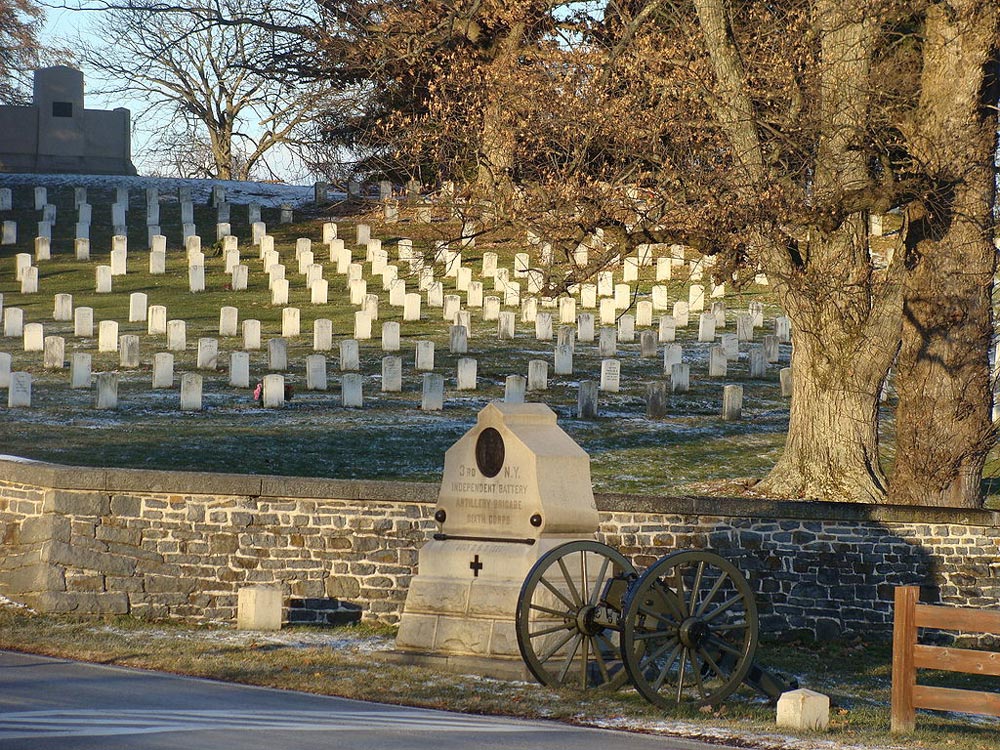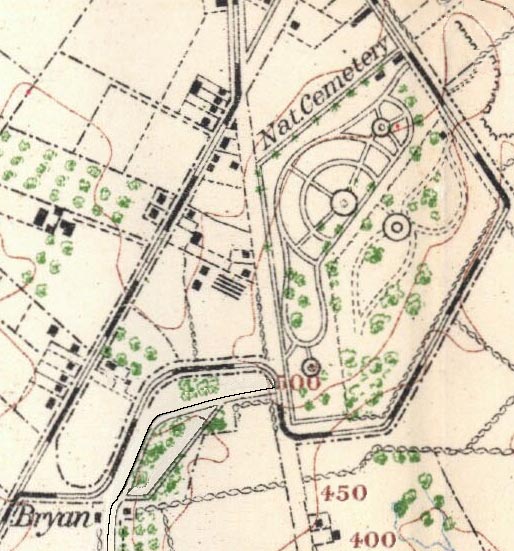 The Gettysburg National Cemetery is located on the site of the Battle of Gettysburg, one of the major battles that took place during the American Civil War. The cemetery is part of the Gettysburg National Military Park.
The Gettysburg National Cemetery is located on the site of the Battle of Gettysburg, one of the major battles that took place during the American Civil War. The cemetery is part of the Gettysburg National Military Park.
The cemetery was opened in 1863 as a national cemetery, a burial ground for Union casualties in the Battle of Gettysburg. The cemetery was later extended to hold the remains of American soldiers in the Spanish American War, World War 1, and other conflicts. It was also opened for the burials of not just military personnel, but their spouses and children as well.
Background
The Battle of Gettysburg, which was one of the most significant battles of the Civil War, took place between July 1 and July 3 in 1863. General Robert E. Lee‘s Army of Northern Virginia had been conducting a campaign to not just defend the Confederacy but to actually invade the North.
At the strategic crossroads at Gettysburg in Pennsylvania, Lee’s armies were confronted by the Army of the Potomac under the command of Major General George E. Meade. In the bloody battle that followed, initial Confederate success was overturned and Lee was eventually forced to retreat to Virginia with his army. The battle proved to be a turning point in the war. After his defeat, Lee had to abandon all hope of overpowering Union forces, and it became clear that the Union army was gaining the upper hand. However, the victory came at a high cost for the Federal forces with 3,155 troops recorded as dead, 14,531 wounded, and another 5,369 missing or captured.
Many soldiers had been quickly buried in what were to be temporary graves and several local Gettysburg residents began to show concern for the poor condition of these graves, which were distributed around the battlefield and the areas where temporary hospitals had been set up.
Soldier’s National Cemetery
 They petitioned the Governor of Pennsylvania, Andrew Curtin, to buy the land from the owners on behalf of the state, and to establish a fitting burial place for the dead soldiers.
They petitioned the Governor of Pennsylvania, Andrew Curtin, to buy the land from the owners on behalf of the state, and to establish a fitting burial place for the dead soldiers.
David Wills, a Gettysburg lawyer, was appointed as an agent of the state to manage the establishment of what was called a “Soldier’s National Cemetery.” Wills negotiated the purchase of plots of land on behalf of the Pennsylvania government, and employed a renowned landscape artist by the name of William Saunders, to design the cemetery.
Wills also oversaw the transfer and re-internment of the bodies from various parts of the battlefield and surrounding areas to the new cemetery. The remains of soldiers who had died following treatment at hospitals further afield, in Philadelphia, Baltimore and Washington were also brought to the new military cemetery.
Gettysburg Address
The formal opening of the cemetery took place on November 19, 1863. The ceremony included prayers and hymns. The President, Abraham Lincoln, attended the opening ceremony, and it was at this that he made one of the most famous speeches in history, the Gettysburg Address.
The following year, 1864, several citizens of Gettysburg formed the Gettysburg Battlefield Memorial Association, the GBMA. The association was formed to campaign for the preservation as a memorial of parts of the battlefield. Following the transfer of lands from the GBMA to the government in 1895, the Federal government declared the area as a National Military Park in which Gettysburg National Cemetery was included.